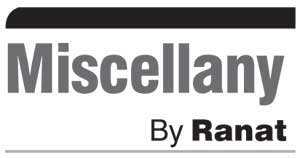Tuesday Feb 11, 2025
Tuesday Feb 11, 2025
Saturday, 21 January 2017 03:00 - - {{hitsCtrl.values.hits}}
Top Government officials are bound to breathe a sigh of relief over President Maithripala Sirisena’s decision to free from the dress code that they should be, as we say, ‘in full suit’.
They were directed to wear tie and coat by President Ranasinghe Premadasa in the early 1990s when he realised that there was no uniformity in the way they were attired. He thought it was not in keeping the high posts they held.
To be at work properly clad was a practice we followed from the days of the British administrators. They didn’t bother about the climate. They continued the ‘tradition’ of continuing what they were used to back at home to beat the cold weather.
The European dress was what everyone was used to. Even among the parliamentarians those who wore a simple white national dress could be counted on one’s fingertips.
I remember the mid-1950s when as parliamentary reporters we had to be dressed in tie and coat when covering the proceedings of the then House of Representatives located at Galle Face.
The press box formed part of the ‘well’ – the area in the chamber where MPs sat. While the press box was located alongside the Opposition benches, public officials’ box was opposite the press box alongside the Government benches.
The MPs had to attend sessions dressed either in full suit or national dress. It was years later that the MPs’ dress code was changed to include trousers and long-sleeved open collar shirt worn over the trouser – a more practical dress ideal for the warm climate.
Those in the public service were only expected to be dressed in a convenient way, with almost all males wearing shirt and trouser to office. Heads of departments usually sported a tie.
As for the private sector, with most of the big companies continuing to be in business in Sri Lanka after independence, the management styles continued without change. European dress codes were maintained, with those in executive grades invariably wearing a tie and the more senior managers wearing a coat as well. This trend continued even after most of the companies changed hands and locals took over their management.
When the Bandaranaike era began in 1956, a sense of freedom swept through the masses and the national dress became more accepted than earlier with most of the ministers and newly-elected MPs wearing the simple white dress. Those in the public and private sectors, however, continued with the dress they were used to.
Of the top level officials in the Bandaranaike administration, I distinctly remember N.Q. Dias who started as the first Director of Cultural Affairs and soon rose to become a Permanent Secretary donning a national dress.
Cabinet Secretary B.P. Peiris was always seen in full suit. So were a few other senior civil servants. There was no specific dress code for them and they were free to wear what they preferred. I also remember at least one head of a department – D.B.I.P.S. Siriwardena – often coming to office in shorts.
As newspaper reporters, most of us preferred to wear a tie when we did our news rounds since then there was ‘more acceptance’ by the staff in Government offices and other institutions.
Though wearing shoes was the accepted norm when one is in trousers, the practice of wearing slippers crept in and sometimes looked rather untidy. The argument, of course, was it was so convenient to wear slippers even though it didn’t look ‘dressy’.
When the ‘bush shirt’ came into vogue, many found it to be more convenient. By wearing a ‘bush coat’ one could avoid a tie. The short-sleeved bush coat was very comfortable and dressy.
To be dressed in a full suit inside an air-conditioned office is no problem. But to attend the numerous functions and other outdoor activities wearing tie and coat is, in a way, a punishment. President Sirisena obviously saw top officials suffering in the scorching sun. So he made the wise decision.
Discover Kapruka, the leading online shopping platform in Sri Lanka, where you can conveniently send Gifts and Flowers to your loved ones for any event including Valentine ’s Day. Explore a wide range of popular Shopping Categories on Kapruka, including Toys, Groceries, Electronics, Birthday Cakes, Fruits, Chocolates, Flower Bouquets, Clothing, Watches, Lingerie, Gift Sets and Jewellery. Also if you’re interested in selling with Kapruka, Partner Central by Kapruka is the best solution to start with. Moreover, through Kapruka Global Shop, you can also enjoy the convenience of purchasing products from renowned platforms like Amazon and eBay and have them delivered to Sri Lanka.
Discover Kapruka, the leading online shopping platform in Sri Lanka, where you can conveniently send Gifts and Flowers to your loved ones for any event including Valentine ’s Day. Explore a wide range of popular Shopping Categories on Kapruka, including Toys, Groceries, Electronics, Birthday Cakes, Fruits, Chocolates, Flower Bouquets, Clothing, Watches, Lingerie, Gift Sets and Jewellery. Also if you’re interested in selling with Kapruka, Partner Central by Kapruka is the best solution to start with. Moreover, through Kapruka Global Shop, you can also enjoy the convenience of purchasing products from renowned platforms like Amazon and eBay and have them delivered to Sri Lanka.